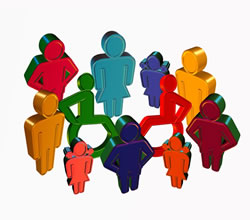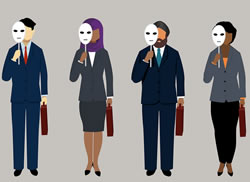Pritika Padhi* says a more diverse workforce is the natural outcome of having a more inclusive work environment.
 My first encounter with the corporate practices of diversity was many years back when I was hired into a large multinational company only to be told by my peers that the organisation had a “diversity hiring target” and I got in just because I met those criteria!
My first encounter with the corporate practices of diversity was many years back when I was hired into a large multinational company only to be told by my peers that the organisation had a “diversity hiring target” and I got in just because I met those criteria!
I felt humiliated and trivialised.
As if all my qualifications, skills and experiences were immaterial.
I don’t think the organisation meant for this to happen.
In fact, when some of my fellow recruits and I questioned them about this, they were quite firm and emphatic that the selection process was fair and well-structured.
But this didn’t stop people outside the organisation from carrying the perception that its recruitment practices were biased to improve their diversity scores.
Also, once I joined the organisation and found that diversity scores were, indeed, being tracked in most reviews, I was left feeling unsure about myself and the real reason for having been hired.
Thankfully, most organisations since then have been able to redesign their goals as wanting to be more inclusive rather than just embracing more diversity.
What is the difference?
Simply put, one leads to the other.
A more diverse workforce is the natural outcome of having a more inclusive work environment.
I will try to explain the concept of “inclusion” with two examples from my work-life.
The first one is a group setting where I felt excluded.
This was in a large gathering of senior leaders, and the diversity ratios were actually fairly balanced.
The senior-most leader in the room was making a presentation, explaining the organisation’s performance in the last quarter.
He was trying to use an example of the increasing number of people visiting malls and hypermarkets in the country to establish the economic and growth potential available.
But when he made that observation, he tried to make a joke-like comment about how the ladies in the room would understand this better.
This was followed by sniggers and muffled laughter from the audience, including the women present.
Maybe the presenter was trying to lighten the mood in the room and did so successfully by referring to a well-used stereotype of women being incorrigible shoppers.
Why did I feel excluded?
I don’t think it was because of his choice of example or words.
I think it was because there was no apology or normalising statement after this example, where he could have explicitly stated that he was trying to joke and did not intend to sound biased.
I felt excluded because I did not feel supported by the environment to raise my hand and call him out on this behaviour.
I felt excluded because when I tried to discuss this with my colleagues after the meeting; they were dismissive of my observations.
I may have been wrong in reading the entire situation, but not having the opportunity to discuss and clarify that made me feel both excluded and like a tacit approver of the non-inclusive practices.
The second instance was another group setting where the diversity ratios were actually poor — in a room of 25 grey-haired men, I was the sole (25-year-old) woman trying to participate in a discussion around how developmental conversations should happen.
I had recently joined this organisation and was trying hard not to come across as inexperienced or foolish by … well, by just keeping quiet!
The facilitator of the discussion did something in the middle of the session which I will never forget.
She made direct eye contact with me and gave a small smile and nod as an encouragement to speak up.
She did not utter a single word to me, but that gesture warmed me up from within.
I felt both empowered and obliged to contribute my thoughts.
And once I started, there was no holding back.
To their credit, the other participants in the discussion were also welcoming of my ideas and we had a very productive discussion with clear outcomes at the end of the session.
This is what inclusion feels like — a sense of comfort and belonging with one’s surroundings that eliminates any fear of judgement from our minds.
I am sure we all have experienced these moments, when we felt included and our minds naturally felt unshackled and free to explore and engage.
While there are many research studies that give quantitative data on the need and benefits of inclusive work environments, I think if each of us can think back to a moment when we felt included, we would intuitively understand the importance of being inclusive and practising this consciously.
What I find amusing is that in the first example, the group was actually well-balanced from a gender and age diversity point of view.
In the second example, the group was largely one-dimensional in terms of age and gender.
But the second one is what I experienced as being more inclusive.
Which is why I keep asking everyone I meet, do you really want a more diverse workforce, or a more inclusive one?
* Pritika Padhi works in talent management and leadership development at L&T Financial Services in India. She blogs at www.independencewalk.wordpress.com.
This article first appeared at www.workforce.com.











